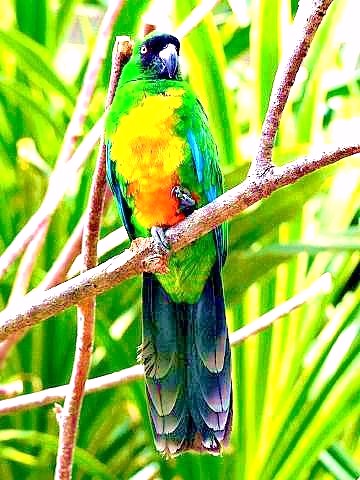ERROR : Server Busy(-1105)
ERROR : Server Busy(-1105)
Masked shining parrot (Prosopeia personata)
The masked shining parrot (Prosopeia personata) is a large, long-tailed parrot found only on one island, in Fiji. This colourful bird has vibrant green plumage over most of its body, with a stunning orange-yellow breast and belly. It has sooty-black colouration around its beak and eyes, and striking blue feathers at the tips of its wings. The masked shining-parrot’s tail is green with a blue wash, and is darker underneath.
The masked shining parrot has a grey-black beak and feet, and distinctive orange-red eyes. In contrast to the adults, young individuals have a horn-coloured beak, and have brown eyes and less black on the face.
The calls of the masked shining parrot include a variety of loud, grating squawks and screeches, which are produced while the bird is perched and also when it is in flight. |

